
Welcome to Hyperion Records, an independent British classical label devoted to presenting high-quality recordings of music of all styles and from all periods from the twelfth century to the twenty-first.
Hyperion offers both CDs, and downloads in a number of formats. The site is also available in several languages.
Please use the dropdown buttons to set your preferred options, or use the checkbox to accept the defaults.

| Westminster Abbey Choir, James O'Donnell (conductor), Paul Archibald (trumpet), Robert Quinney (organ)» More |
| St Paul's Cathedral Choir, John Scott (conductor), Andrew Lucas (organ)» More |
| St John's College Choir Cambridge, Andrew Nethsingha (conductor), Alexander Tomkinson (treble), Daniel Brown (countertenor), Gopal Kambo (tenor), James Adams (bass), David Blackadder (trumpet), Joseph Wicks (organ)» More |
| Tenebrae, Nigel Short (conductor), Christopher Deacon (trumpet), James Sherlock (organ)» More |
| King's College Choir Cambridge, Sir Stephen Cleobury (conductor), Alison Balsom (trumpet), Douglas Tang (organ)» More |
from notes by Christopher Palmer © 1993
extrait des notes rédigées par Nicholas Temperley © 2014
Français: Gildas Tilliette
Der Prosa-Psalm in d-Moll wird durch eine Art von einstimmig gesungenem Rezitativ eingeleitet, mit einer SATB-Version der Hymne in D-Dur, die pianissimo im Hintergrund zu hören ist. Die Rezitation wird vom Chor in voller Besetz ung fortgesetzt und geht dann in Fis-Moll über. Nach einem Orgelzwischenspiel, das auf St. Anne zurückgeht, nimmt das Psalmodieren an Leidenschaftlichkeit zu. Anschließend wird die Hymne in freien choralen Kontrapunkten zerlegt, bis sie in einem prachtvollen D-Dur-Abschluss ihre Krönung findet.
aus dem Begleittext von Nicholas Temperley © 2014
Deutsch: Paul Hoegger
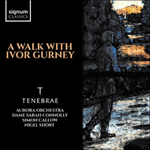 A walk with Ivor Gurney A walk with Ivor GurneyDame Sarah Connolly performs Ivor Gurney's wonderful orchestral songs in a programme that also includes some of Vaughan Williams's most poignant choral works and a new tribute to Gurney by Judith Bingham.» More |
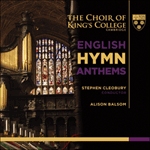 English Hymn Anthems English Hymn AnthemsThis album contains anthems based on hymn tunes from the Anglican choral tradition. It continues the Choir’s active commitment to expanding the popular understanding of choral repertoire through original research and recording.» More |
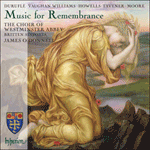 Music for Remembrance Music for RemembranceThroughout the past century Westminster Abbey has been a focus of national remembrance on Armistice Day. This latest album from its Choir is a programme of memorial music composed in England and France in the shadow of two World Wars. The main fea ...» More |
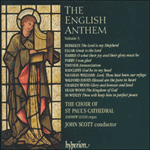 The English Anthem, Vol. 5 The English Anthem, Vol. 5‘A rich feast here … a magnificent choir’ (Gramophone) ‘A memorable record of some of the best 19th- and 20th-century church music’ (Methodist Recorder)» More |
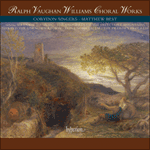 Vaughan Williams: Choral works Vaughan Williams: Choral worksIssued to mark the fiftieth anniversary of Vaughan Williams’s death, this collection is tantalizing: it starts with one of the best-selling discs in the catalogue, the Serenade to Music, and includes such favourites as the Five Mystical Songs and The ...» More |
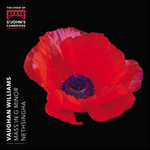 Vaughan Williams: Mass in G minor & other choral works Vaughan Williams: Mass in G minor & other choral worksAndrew Nethsingha and St John's College Choir Cambridge mark the centenary of the 1918 Armistice with a new recording of choral works by Ralph Vaughan Williams.» More |

